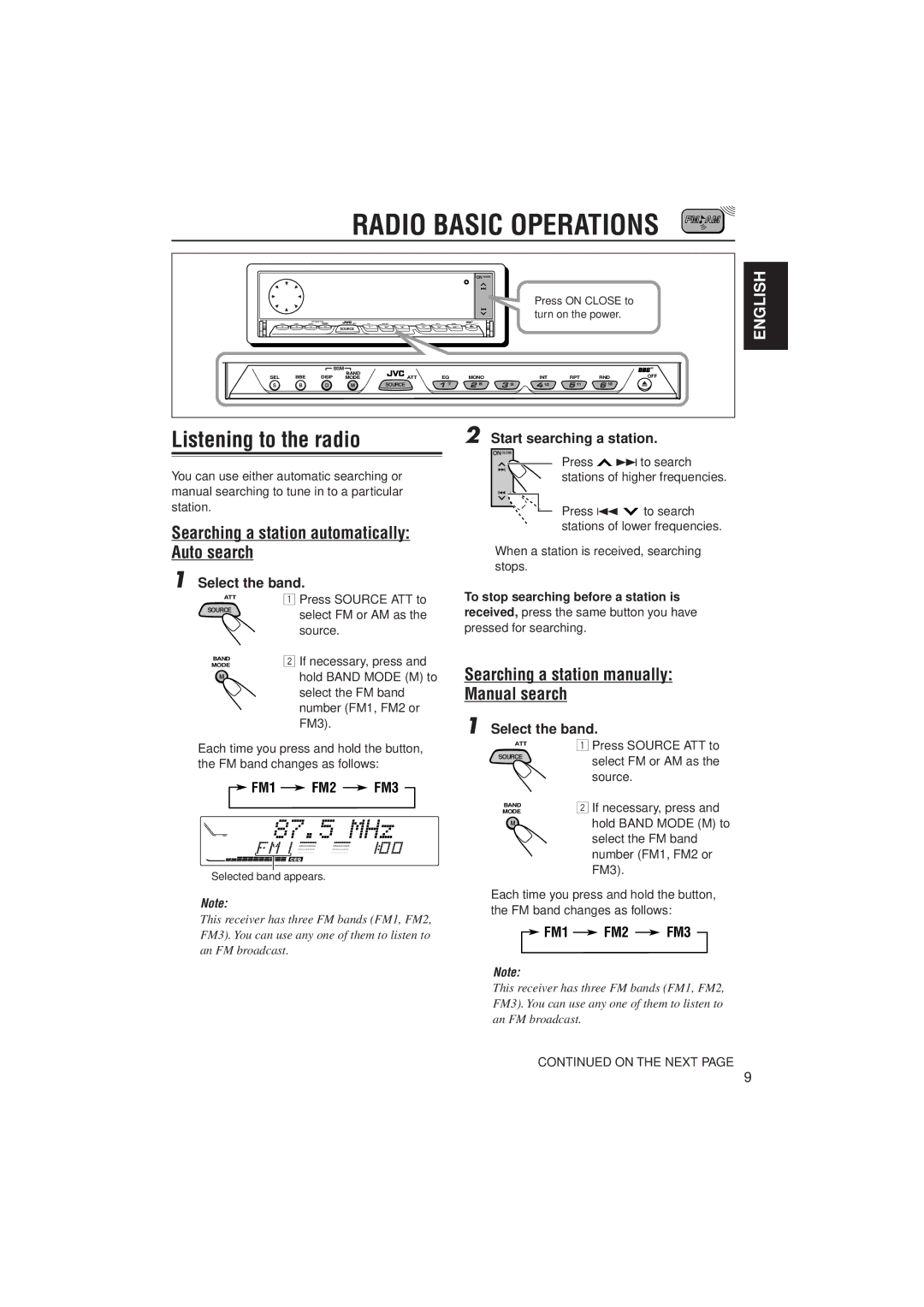
RADIO BASIC OPERATIONS
|
|
|
|
|
|
|
| Press ON CLOSE to |
| ||
|
|
|
|
|
|
|
| turn on the power. |
| ||
|
| SSM | ATT |
|
|
|
|
|
|
|
|
|
|
| SOURCE |
|
|
|
|
|
|
|
|
|
|
| SSM |
|
|
|
|
|
|
|
|
SEL | BBE | DISP | BAND | ATT | EQ | MONO |
| INT | RPT | RND | OFF |
MODE |
| ||||||||||
S | B | D | M | SOURCE | 1 7 | 2 8 | 3 9 | 10 | 5 11 | 6 12 |
|
Listening to the radio |
|
| 2 Start searching a station. | ||||||||
ENGLISH
You can use either automatic searching or manual searching to tune in to a particular
station.
Searching a station automatically: Auto search
1 Select the band.
Press ![]() ¢ to search stations of higher frequencies.
¢ to search stations of higher frequencies.
Press 4 ![]() to search stations of lower frequencies.
to search stations of lower frequencies.
When a station is received, searching stops.
ATT
SOURCE
BAND
MODE
M
1Press SOURCE ATT to select FM or AM as the source.
2If necessary, press and hold BAND MODE (M) to select the FM band number (FM1, FM2 or FM3).
To stop searching before a station is
received, press the same button you have pressed for searching.
Searching a station manually: Manual search
1 Select the band.
Each time you press and hold the button, the FM band changes as follows:
 FM1
FM1  FM2
FM2  FM3
FM3
DIRECTORY
FILEDISC
TRACK
CEQ | ST RPT | RND | TP PTY |
Selected band appears.
ATT
SOURCE
BAND
MODE
M
1Press SOURCE ATT to select FM or AM as the source.
2If necessary, press and hold BAND MODE (M) to select the FM band number (FM1, FM2 or FM3).
Note:
This receiver has three FM bands (FM1, FM2, FM3). You can use any one of them to listen to an FM broadcast.
Each time you press and hold the button, the FM band changes as follows:
![]() FM1
FM1 ![]() FM2
FM2 ![]() FM3
FM3
Note:
This receiver has three FM bands (FM1, FM2, FM3). You can use any one of them to listen to an FM broadcast.
CONTINUED ON THE NEXT PAGE
9
